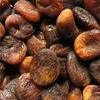Chromium is an essential trace mineral that is found naturally only in combination with other elements. Since it's not manufactured by the body, it must be obtained from your diet. Chromium is important in the metabolism of fats and carbohydrates. Anyone wanting to lose weight and diabetics take note, this mineral could be of great benefit to your health.
Preliminary research has found that chromium improves glucose tolerance and helps metabolize glucose. Other studies have shown that chromium may increase blood levels of HDL cholesterol (the "good" cholesterol). The body requires energy to survive and function, insulin and chromium, acting together, help convert glucose (blood sugar) into energy. When your body is chromium deficient, insulin does not function normally and therefore not enough energy is made. When this happens glucose backs up in the bloodstream which can lead to increased risk of a heart attack, stroke, diabetes, and depression.
Sources
The best source of chromium is true brewer's yeast but, for most people it causes abdominal bloating and nausea. Other good sources of chromium include beef, liver, eggs, chicken, oysters, wheat germ, green peppers, apples, bananas, spinach, butter, black pepper and molasses. Some brands of beer also contain significant amounts, now my husband would go for this method of getting chromium.
Whole Grains
Like other minerals, whole grains which include the bran and germ found in wheat, brown rice, oats, barley, amaranth and corn are all rich sources of chromium picolinate. When the whole germ of these grains is consumed in the diet, you can receive at least 5 mcg of the chromium, were processed flour has no germ at all.
Fruits and Vegetables
Some more examples are fruits such as orange, grapes, bananas and apples (very minute amounts). These fruits when consumed in the juice or pulp forms provide all the necessary chromium to the body. One cup of orange juice contains about 2 mcg and a cup of grape juice contains 8 mcg of chromium picolinate. Other than these fruits, there are a few vegetables which also contribute to this dietary source. These are broccoli, green beans, dried garlic and potatoes, where ½ cup broccoli provides about 11 mcg and ½ green beans, about 1mcg of the chromium picolinate. 1 teaspoon of dried garlic adds up to 3 mcg of this compound, thus using it daily in your meals can be quite beneficial.
Meat
There are a few meats such as beef and turkey breast which are also rich in this compound. 3 oz. of the two lean meats provide about 2 mcg of chromium which is a good amount once in a day. However, there are a few side effects of chromium picolinate so it's best to get it from natural sources.
Side Effects If Taken In Vitamin Or Supplement Form
Chromium is safe for most adults when used appropriately for 6 months or less. Chromium is possibly safe for most people when used for longer periods of time. Some people experience side effects such as skin irritation, headaches, dizziness, nausea, mood changes and impaired thinking, judgment, and coordination. High doses have been linked to more serious side effects including blood disorders, liver or kidney damage, and other problems. It is not known for sure if chromium is the actual cause of these side effects.
References
Aparna Jadhav Published: 4/6/2011
Mayo Clinic -Chromium Supplement 2011
Recommended Dietary Allowances, 10th ed. Washington, D.C.: National Academy Press, 1989.
Murray M. Encyclopedia of Nutritional Supplements. Rocklin, CA: Prima Publishing, 1996.
Web Md http://www.webmd.com/vitamins-supplements/ingredientmono-932-CHROMIUM.aspx?activeIngredientId=932&activeIngredientName=CHROMIUM
Preliminary research has found that chromium improves glucose tolerance and helps metabolize glucose. Other studies have shown that chromium may increase blood levels of HDL cholesterol (the "good" cholesterol). The body requires energy to survive and function, insulin and chromium, acting together, help convert glucose (blood sugar) into energy. When your body is chromium deficient, insulin does not function normally and therefore not enough energy is made. When this happens glucose backs up in the bloodstream which can lead to increased risk of a heart attack, stroke, diabetes, and depression.
Sources
The best source of chromium is true brewer's yeast but, for most people it causes abdominal bloating and nausea. Other good sources of chromium include beef, liver, eggs, chicken, oysters, wheat germ, green peppers, apples, bananas, spinach, butter, black pepper and molasses. Some brands of beer also contain significant amounts, now my husband would go for this method of getting chromium.
Whole Grains
Like other minerals, whole grains which include the bran and germ found in wheat, brown rice, oats, barley, amaranth and corn are all rich sources of chromium picolinate. When the whole germ of these grains is consumed in the diet, you can receive at least 5 mcg of the chromium, were processed flour has no germ at all.
Fruits and Vegetables
Some more examples are fruits such as orange, grapes, bananas and apples (very minute amounts). These fruits when consumed in the juice or pulp forms provide all the necessary chromium to the body. One cup of orange juice contains about 2 mcg and a cup of grape juice contains 8 mcg of chromium picolinate. Other than these fruits, there are a few vegetables which also contribute to this dietary source. These are broccoli, green beans, dried garlic and potatoes, where ½ cup broccoli provides about 11 mcg and ½ green beans, about 1mcg of the chromium picolinate. 1 teaspoon of dried garlic adds up to 3 mcg of this compound, thus using it daily in your meals can be quite beneficial.
Meat
There are a few meats such as beef and turkey breast which are also rich in this compound. 3 oz. of the two lean meats provide about 2 mcg of chromium which is a good amount once in a day. However, there are a few side effects of chromium picolinate so it's best to get it from natural sources.
Side Effects If Taken In Vitamin Or Supplement Form
Chromium is safe for most adults when used appropriately for 6 months or less. Chromium is possibly safe for most people when used for longer periods of time. Some people experience side effects such as skin irritation, headaches, dizziness, nausea, mood changes and impaired thinking, judgment, and coordination. High doses have been linked to more serious side effects including blood disorders, liver or kidney damage, and other problems. It is not known for sure if chromium is the actual cause of these side effects.
References
Aparna Jadhav Published: 4/6/2011
Mayo Clinic -Chromium Supplement 2011
Recommended Dietary Allowances, 10th ed. Washington, D.C.: National Academy Press, 1989.
Murray M. Encyclopedia of Nutritional Supplements. Rocklin, CA: Prima Publishing, 1996.
Web Md http://www.webmd.com/vitamins-supplements/ingredientmono-932-CHROMIUM.aspx?activeIngredientId=932&activeIngredientName=CHROMIUM



 RSS Feed
RSS Feed
